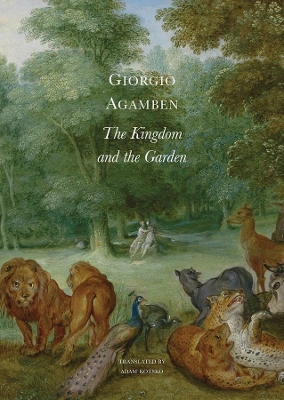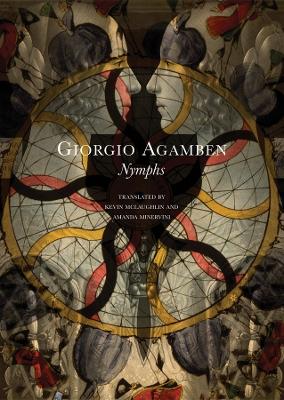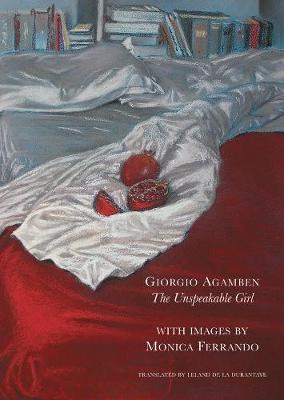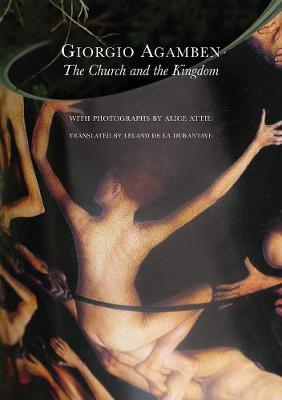The Italian List - (Seagull Titles - CHUP)
5 total works
What happened to paradise after Adam and Eve were expelled? The question may sound like a theological quibble, or even a joke, but in The Kingdom and the Garden, Giorgio Agamben uses it as a starting point for an investigation of human nature and the prospects for political transformation. In a tour-de-force reinterpretation of the Christian tradition, Agamben shows that the Garden of Eden has always served as a symbol for humanity’s true nature. Where earlier theologians viewed the expulsion as temporary, Augustine’s doctrine of original sin makes it permanent, reimagining humanity as the paradoxical creature that has been completely alienated from its own nature. From this perspective, there can be no return to paradise, only the hope for the messianic kingdom. Yet there have always been thinkers who rebelled against this idea, and Agamben highlights two major examples. The first is the early medieval philosopher John Scotus Eriugena, who argued for a radical unity of humanity with all living things. The second is Dante, whose vision of the earthly paradise points towards the possibility of a genuine human happiness in this world. In place of the messianic kingdom, which has provided the model for modern revolutionary movements, Agamben contends that we should place our hopes for political change in a return to our origins, by reclaiming the earthly paradise.
In 1900, Dutch art historians Andre Jolles and Aby Warburg constructed an experimental dialogue in which Jolles supposed he had fallen in love with the figure of a young woman in a painting: "A fantastic figure - shall I call her a servant girl, or rather a classical nymph? What is the meaning of it all - Who is the nymph? Where does she come from?" Warburg's response: "In essence she is an elemental spirit, a pagan goddess in exile," serves as the touchstone for this wide-ranging and theoretical exploration of female representation in iconography. In "Nymphs", the newest translation of Italian philosopher Giorgio Agamben's work, the author notes that academic research has lingered on the "pagan goddess," while the concept of "elemental spirit," ignored by scholars, is vital to the history of iconography. Tracing the genealogy of this idea, Agamben goes on to examine subjects as diverse as the aesthetic theories of choreographer Domineco da Piacenza, Friedrich Theodor Vischer's essay on the "symbol," Walter Benjamin's concept of the dialectic image, and the bizarre discoveries of photographer Nathan Lerner in 1972.
From these investigations emerges a startlingly original exploration of the ideas of time and the image. Agamben is the rare writer whose ideas and works have a broad appeal across many fields, and "Nymphs" will engage not only the author's devoted fans in philosophy, legal theory, sociology, and literary criticism, but his growing audience among art theorists and historians as well.
From these investigations emerges a startlingly original exploration of the ideas of time and the image. Agamben is the rare writer whose ideas and works have a broad appeal across many fields, and "Nymphs" will engage not only the author's devoted fans in philosophy, legal theory, sociology, and literary criticism, but his growing audience among art theorists and historians as well.
Italian philosopher Giorgio Agamben is the rare writer whose ideas and works have a broad appeal across many fields, and his devoted fans are not just philosophers, but readers of political and legal theory, sociology, and literary criticism as well. Agamben's intuition and meditation are fascinating, and not least when he turns his critical eye to the mysteries and contradictions of early religion. The "Unspeakable Girl: The Myth and Mystery of Kore" is a book of three richly detailed treatments of the myth of Kore. Kore, also called Persephone and referred to poetically by the Greeks as "the unspeakable girl," was the daughter of Demeter and Zeus who was abducted by Hades and made queen of the netherworld. Kore and her story gave rise to a mysterious cult at Eleusis, the site of the well where Demeter mourned her lost daughter. This book opens with an innovative and insightful essay that focuses on the mysterious indeterminacy of the figure of Kore/Persephone - at once a woman and a girl, a virgin and a mother - as well as the attendant divisions of speech and silence, the sacred and the profane, the animal and the human, and the mortal and the divine.
Tracing these dichotomies, Agamben is in top form, able to articulate paradoxes that in another writer's hands might be ineffable. In the second and third parts of the book the reader is treated to a series of beautiful paintings by acclaimed artist Monica Ferrando, as well as her translation of crucial Greek and Latin source materials. As a whole, "The Unspeakable Girl" will not only be welcomed by Agamben's many readers across the disciplines, but also by enthusiasts of classical mythology in general.
Tracing these dichotomies, Agamben is in top form, able to articulate paradoxes that in another writer's hands might be ineffable. In the second and third parts of the book the reader is treated to a series of beautiful paintings by acclaimed artist Monica Ferrando, as well as her translation of crucial Greek and Latin source materials. As a whole, "The Unspeakable Girl" will not only be welcomed by Agamben's many readers across the disciplines, but also by enthusiasts of classical mythology in general.
Italian philosopher Giorgio Agamben is the rare writer whose ideas and works have a broad appeal across many fields, and his devoted fans are not just philosophers, but readers of political and legal theory, sociology, and literary criticism as well. In March 2009, Agamben was invited to speak in Paris’ Notre-Dame Cathedral in the presence of the Bishop of Paris and a number of other high-ranking church officials. His resulting speech, a stunningly lucid and provocative look at the history and state of the Church and its role in society, is presented here. The Church and the Kingdom is at once a pointed attack on the institutional structure of the Catholic Church and a theoretical excursus on the concepts of messianic time and economy. Presenting an exegesis of certain key passages in the New Testament, Agamben examines the philology and philosophy at the root of the Church and of its earthly reign. With its examinations of the foundational texts of the Church, which are also the foundational texts of our modern idea of economy, The Church and the Kingdom reveals significant connections and parallel ideologies which are imperative to understanding the current global situation. This edition of Agamben’s text is accompanied by photographs by artist Alice Attie. Made from folded and twisted reproductions of paintings culled from Christian iconography, these works of art evoke the restless challenge that well-characterizes Agamben’s four decades of philosophy and critique. This book will be welcomed by Agamben’s many readers across the disciplines.
Italian philosopher Giorgio Agamben is the rare writer whose ideas and works have a broad appeal across many fields, and his devoted fans are not just philosophers, but readers of political and legal theory, sociology, and literary criticism as well. In March 2009, Agamben was invited to speak in Paris' Notre-Dame Cathedral in the presence of the bishop of Paris and a number of other high-ranking church officials. His resulting speech, a stunningly lucid and provocative look at the history and state of the church and its role in society, is presented here. "The Church and its Reign" is at once a pointed attack on the institutional structure of the Catholic Church and a theoretical excursus on the concepts of messianic time and economy. Presenting an exegesis of certain key passages in the New Testament, Agamben examines the philology and philosophy at the root of the church and of its earthly reign. With its examinations of the foundational texts of the church, which are also the foundational texts of our modern idea of economy, "The Church and its Reign" reveals significant connections and parallel ideologies which are imperative to understanding the current global situation.
This edition of Agamben's text is accompanied by photographs by artist Alice Attie. Made from folded and twisted reproductions of paintings culled from Christian iconography, these works of art evoke the restless challenge that characterizes Agamben's four decades of philosophy and critique. This book will be welcomed by Agamben's many readers across the disciplines.
This edition of Agamben's text is accompanied by photographs by artist Alice Attie. Made from folded and twisted reproductions of paintings culled from Christian iconography, these works of art evoke the restless challenge that characterizes Agamben's four decades of philosophy and critique. This book will be welcomed by Agamben's many readers across the disciplines.




